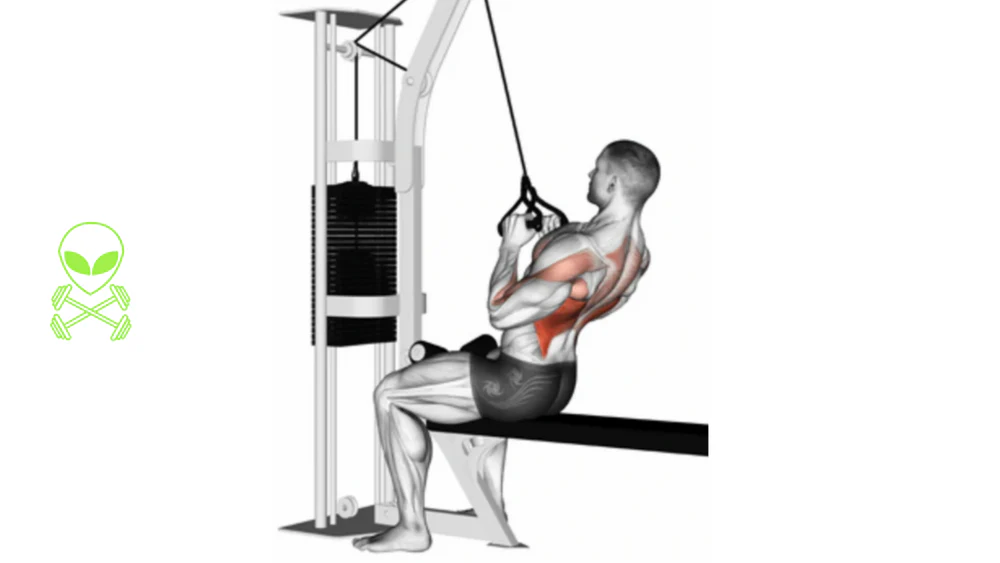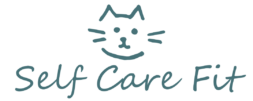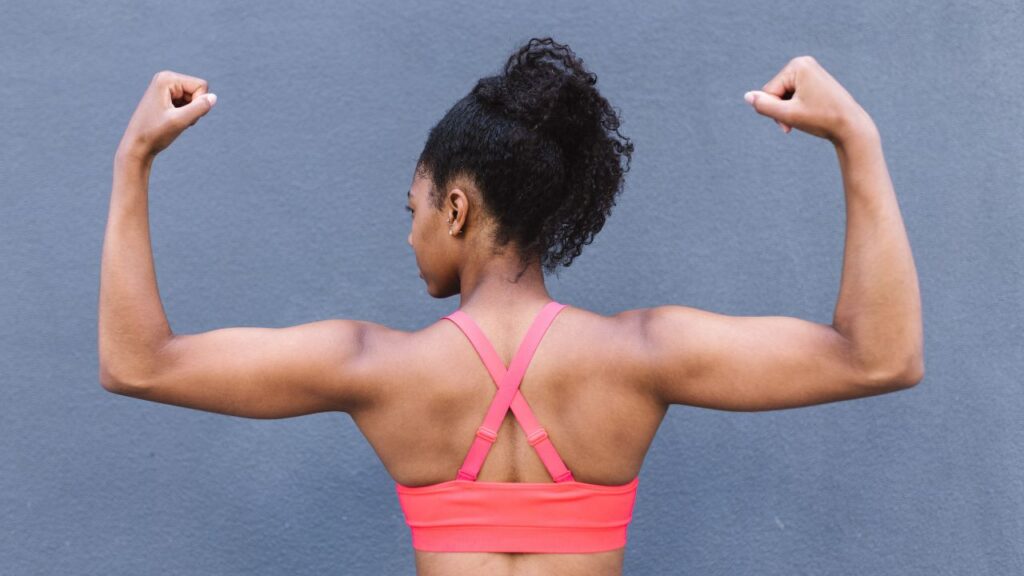Did you know that the latissimus dorsi, the primary muscle targeted by pulldown machine exercises, is the largest muscle in your back?
This versatile piece of equipment does more than just build a strong, wide back. In fact, the pulldown machine allows you to perform various exercises targeting multiple upper-body muscle groups simultaneously. Additionally, with its different grip options – overhand, underhand, and neutral – you can effectively engage different parts of your back muscles while addressing any strength imbalances through single-arm movements.
Whether you’re new to strength training or looking to expand your workout routine, the pulldown machine offers a comprehensive approach to upper body development. From traditional lat pulldowns to core-strengthening cable exercises, this guide will walk you through everything you need to know about maximizing your pulldown machine workouts.
Ready to build strength, improve your posture, and develop a stronger upper body? Let’s dive into the essential pulldown machine exercises that will help you achieve your fitness goals.
Getting Started with Pulldown Machine Exercises
Before diving into your first pulldown machine workout, properly setting up the equipment is crucial for both effectiveness and safety. The pulldown machine consists of several adjustable components that need to be correctly positioned for your body type.
Machine setup essentials
Setting up the pulldown machine correctly ensures you target the right muscles and avoid injury. Initially, locate the machine in your gym – it’s typically found near the cable equipment section.
To properly adjust the machine:
- Seat Height Adjustment: Sit down and modify the seat height so your feet rest flat on the floor with your knees bent at approximately 90 degrees. For most people, this angle provides optimal stability during the exercise.
- Thigh Pad Positioning: Next, adjust the thigh pad to secure your lower body. The pad should rest firmly on top of your thighs without being uncomfortably tight. This prevents your body from lifting off the seat when pulling heavier weights.
- Weight Selection: For beginners, start with a lighter weight that allows you to complete 12-15 repetitions with proper form. On a selectorized machine, simply insert the pin into the appropriate weight plate hole. Alternatively, on plate-loaded machines, ensure you load equal weight on both sides for balanced movement.
- Handle Attachment: Choose the appropriate bar attachment for your exercise. Most beginners should start with the standard straight bar, which allows for a comfortable grip width. Securely attach it to the cable using the provided carabiner or clip.
Furthermore, check that you can comfortably reach the bar without fully standing, yet still achieve a complete range of motion with your arms extended. If necessary, ask a certified trainer to help with these adjustments.
Safety considerations with pulldown machine exercises for beginners
Accordingly, proper form is essential when using the pulldown machine to maximize results and prevent injuries. Several key safety considerations include:
Proper body positioning: Maintain a straight, neutral spine throughout the exercise. Sit upright with shoulders back and down, core engaged, and feet flat on the floor. Although you’ll need to lean back slightly to prevent the bar from hitting your face, avoid excessive leaning.
Grip width and hand placement: Choose a shoulder-width or slightly wider grip for beginners. Grip the bar symmetrically, using the bends in the bar as reference points. Proper grip width reduces unnecessary strain on your shoulder joints.
Movement control: Pull the bar down in a controlled manner without using momentum. Focus on pulling through your elbows rather than your arms to properly engage your back muscles. The bar should come to chin level – not behind your neck, which can stress your shoulders.
Weight management: Using too much weight is among the most common mistakes beginners make. Instead, select a weight that challenges you but allows for proper form throughout all repetitions.
Listening to your body: Pay attention to how you feel during the exercise. If you experience sharp pain or significant discomfort, stop immediately and reassess your form or weight.
Therefore, before increasing weight, ensure you can complete your desired repetitions with proper technique. Most importantly, if you have any existing wrist, elbow, or shoulder issues, consult with your doctor or physical therapist before attempting pulldown exercises.
Back-Focused Pulldown Machine Exercises
The latissimus dorsi muscles are powerhouses for your back development, and mastering pulldown machine exercises is essential for building them effectively. Moreover, these versatile movements target different areas of your back, depending on your grip and execution technique.
Standard lat pulldown technique
The standard lat pulldown forms the foundation of all pulldown variations, primarily targeting your latissimus dorsi while also engaging your biceps and middle back muscles. To perform this exercise correctly:
- Sit facing the pulldown machine with your thighs secured under the pads
- Grasp the bar with a pronated grip (palms facing away) at shoulder-width apart
- Straighten your arms fully while keeping your shoulders down and back
- Pull the bar down by depressing your shoulder blades first, then flexing your elbows
- Continue until the bar reaches your upper chest level
- Slowly return to the starting position with controlled movement
One crucial element often overlooked is maintaining proper core engagement throughout the exercise. Specifically, keep some tension through your abdominals as you pull to prevent excessive arching through your spine. Likewise, focus on pulling through your elbows rather than your arms to properly engage your back muscles.
Common mistakes include allowing momentum to dictate the movement and letting your head jut forward during the pull. Hence, concentrate on maintaining control throughout each repetition and keeping your shoulder blades moving naturally on your rib cage.
Wide grip variations for upper lats
Wide grip pulldowns effectively develop back width and that coveted V-taper appearance. Consequently, this variation places greater emphasis on the upper portion of your lats.
For proper execution, position your hands wider than shoulder-width on the bar. Subsequently, this grip reduces bicep involvement, ensuring your back does most of the work. As a result, you’ll experience more intense lat activation, particularly during the eccentric (releasing) phase of the movement.
Research indicates that a pronated (overhand) grip activates the lats 9% more effectively than a supinated grip. Nevertheless, maintain the same fundamental movement pattern – pull the bar down to your upper chest while keeping your torso relatively stable with only a slight backward lean.
The wide grip variation is particularly beneficial for those seeking to enhance their back width. In particular, it creates visual width across your upper body by developing the outer portions of your lats more than standard pulldowns.
Straight-arm pulldowns for lat isolation
The straight-arm pulldown offers a unique advantage for lat development by training these muscles through a longer range of motion. First and foremost, this variation helps people who struggle to feel their lats working during conventional pulldown exercises.
To perform straight-arm pulldowns:
- Stand facing a cable machine with the attachment set around head level
- Grasp the rope or bar with arms extended
- Keep your elbows locked throughout the movement
- Pull the attachment down toward your hips in a controlled arc
- Return slowly to the starting position
The key differentiator of this exercise is maintaining extended elbows throughout the movement. Given that any bending will engage the triceps and reduce lat involvement, focus on keeping your arms straight. In addition, this exercise improves stability on deadlifts by strengthening the lats in the same way they’re used when pulling a bar tight to your body.
Many lifters find straight-arm pulldowns valuable as either a pre-exhaustion technique before other back exercises or as a finisher to isolate the lats at the end of a workout. Yet another benefit is reduced stress on the lower back compared to rows, making it suitable for those with lower back concerns.
Arm-Building Pulldown Variations
While the pulldown machine is primarily known for back development, it can equally serve as a powerful tool for building impressive arm muscles. Through slight adjustments in grip and technique, you can shift the focus from your back to specifically target your biceps, forearms, and triceps for well-rounded arm development.
Close grip pulldowns for biceps and forearms

Close grip pulldowns effectively build both back and arm muscles simultaneously, with particular emphasis on your biceps and forearms. To perform this exercise correctly:
- Attach a close grip handle to the pulldown machine and adjust the thigh pads
- Grip the handle with hands positioned closer than shoulder-width apart
- Sit under the thigh pad with proper posture – chest up, shoulders back
- Depress your shoulder blades, flex your elbows, and pull the handle toward your upper chest
- Pause briefly at the bottom position, focusing on contracting your lats and biceps
- Return to starting position in a controlled manner
For even more forearm engagement, plus muscle and grip strengthening, consider using Fat Gripz accessories or wrapping small towels around the handles. These thicker grips require significantly more crushing power from your forearms while limiting the amount of weight you can initially handle.
Certainly, for those wanting to address muscle imbalances or really focus on form, the single-arm close grip pulldown offers an excellent alternative. This variation allows you to practice pulling and contracting one lat independently while providing intense bicep stimulation on the working side.
Reverse grip technique for bicep emphasis
The reverse grip pulldown (underhand grip) targets both back and biceps but places much greater emphasis on bicep activation. Indeed, research shows this variation activates the biceps just as effectively as traditional bicep curls. One study even found similar muscle growth between participants who did reverse grip pulldowns versus those who did standard curls.
To execute properly:
- Grip the bar using an underhand grip (palms facing you)
- Position hands approximately shoulder-width apart
- Sit with thighs secured and maintain upright posture
- Pull the bar down toward your upper chest while keeping elbows close to your sides
- Focus on the bicep contraction at the bottom position
This variation works exceptionally well because it enables shoulder flexion alongside elbow flexion – a biomechanical advantage that traditional curls can’t provide, as noted by experts who study muscle activation patterns.
Tricep pushdowns using the pulldown station
Despite being primarily associated with back training, the pulldown station serves as an excellent location for one of the best tricep exercises available. Tricep pushdowns effectively build the three-headed muscle at the back of your arms.
To perform tricep pushdowns on a pulldown machine:
- Stand facing the machine with the seat between your legs
- Grasp the bar or rope attachment with both hands
- Tuck your elbows against your sides (crucial for proper form)
- Push downward until your arms fully extend and you feel your triceps contract
- Slowly return to the starting position with controlled movement
Most importantly, keep your elbows pinned close to your body throughout the exercise – allowing them to drift upward or outward reduces tricep activation and may strain your shoulders. After mastering the basic version, try the rope attachment variation, which allows you to pull the ends apart at the bottom for enhanced outer tricep head engagement.
For those seeking variety, the tricep pushdown can be performed one-handed to address imbalances or with different bar attachments (straight, E-Z, or V-angled) based on comfort and individual biomechanics.
Core-Strengthening Cable Exercises
The pulldown station isn’t just for building your back and arms—it’s also a versatile tool for developing core strength. With the right attachments and techniques, you can transform this equipment into a core-strengthening powerhouse.
Cable crunches for upper abs
Cable crunches primarily target your upper abdominals and serratus muscles while also engaging your lower abs. To perform this exercise correctly:
- Kneel in front of the pulldown machine with your back facing the weights
- Grasp the rope attachment and position it behind your neck
- Hold each end of the rope in front of your chest
- Keeping your hips high and locked in place, contract your abs to crunch your torso downward
- Continue until your elbows nearly touch your knees, pause briefly, then return to starting position
For optimal results, maintain a controlled motion throughout the exercise. Additionally, avoid moving your hips during repetitions, as this engages your hip flexors instead of your abs. Importantly, the constant tension provided by the cable machine makes this exercise more effective than traditional crunches.
Kneeling rotations for obliques
Kneeling oblique exercises specifically target your side abdominal muscles. Yet, these movements also improve rotational power and stability in your lower back. To execute properly:
- Kneel beside the cable machine with your side facing the weights
- Grasp the rope attachment with both hands
- Pull the rope to chest height, then rotate your torso toward your front leg
- Pause at the point of maximum contraction before returning to start
Overall, maintaining proper form is crucial—squeeze your glutes for stability and ensure the twisting occurs through your abs, not your lower back. Especially for beginners, starting with lighter weights allows you to master the movement pattern first.
Standing woodchops for functional core strength
Standing woodchops are functional exercises that strengthen your entire core while mimicking real-life movement patterns. To perform:
- Stand with feet shoulder-width apart holding a cable handle
- Begin with arms extended high on one side
- Pull diagonally across your body toward the opposite hip
- Control the movement through your core, not your arms
This exercise effectively works your abs, obliques, and lower back simultaneously. Naturally, maintaining proper breathing is essential—exhale as you twist your torso. The woodchop also improves spine flexibility while enhancing both upper and lower body strength.
Shoulder and Chest Pulldown Movements
Beyond traditional back exercises, the pulldown machine offers excellent options for developing shoulder and chest muscles. With a few adjustments to positioning and attachments, you can transform this versatile equipment into a complete upper body training station.
Face pulls for rear deltoids
Face pulls primarily target the posterior deltoids—muscles that help your arms move backward and are often neglected in typical workout routines. First, attach a rope to the high pulley of your pulldown machine. Next, grasp each end of the rope with your thumbs pointing toward you. Then, pull the rope toward your face while separating your hands as they approach your ears.
Interestingly, face pulls rank among the best exercises for strengthening rear deltoids, trapezius, and upper back muscles. Throughout the movement, focus on squeezing your shoulder blades together as you pull, which transforms this exercise into a powerful engagement of the upper back.
Essentially, strengthening these rear muscles helps prevent the “hunched forward” appearance caused by muscular imbalances. Fundamentally, this exercise supports better posture and may reduce shoulder pain risks over time.
Single-arm exercises for shoulder stability
Single-arm pulldown variations provide unique benefits that bilateral exercises cannot match. Typically, these unilateral movements help eliminate muscle imbalances between sides while engaging your core for anti-rotation stability.
When performing single-arm pulldowns, your body naturally allows for rotation of the thoracic spine and shoulder joint. This rotational pattern mimics daily activities—such as reaching for objects on high shelves—making it a functional exercise.
Apart from this, unilateral training can improve bilateral lifting technique by addressing weaker sides independently. For better execution, try the seated version with support from the bench for extra stability and fuller range of motion.
Cable crossovers for chest development
Cable crossovers effectively target the pectoralis major muscles while also activating muscles in your shoulders and back. In contrast to the bench press, cable crossovers maintain constant tension throughout the entire movement, which can accelerate aesthetic results.
Notably, cable crossovers offer versatility through different handle positions:
- High position (above head) – targets lower chest
- Mid-position (shoulder height) – focuses on middle chest
- Low position – emphasizes upper chest
Traditionally, this exercise ranks third in muscle fiber recruitment for chest development, following only behind bench press and flyes. To perform properly, pull your hands in front of your body in an arch shape, squeezing your chest muscles as your hands nearly touch.
Combining Exercises for a Full-Body Pulldown Workout
Harnessing the full potential of the pulldown machine means combining exercises into cohesive workout routines. To begin with, this versatile piece of equipment allows you to train multiple muscle groups in a single session, making it perfect for both beginners and experienced lifters alike.
Sample beginner workout routine
For newcomers to pulldown machine exercises, a structured routine helps build a foundation of strength and proper technique. Generally, beginners should start with lighter weights while mastering the movement patterns. Here’s an effective full-body pulldown machine workout:
- Standard lat pulldown: 2 sets of 12 reps (adjust seat height so feet are flat on floor)
- Close grip pulldown: 2 sets of 12 reps (focus on pulling through your lats)
- Tricep pushdown: 2 sets of 12 reps (keep elbows tucked at sides)
- Cable crunch: 2 sets of 15 reps (maintain hip position throughout)
- Face pull: 2 sets of 12 reps (squeeze shoulder blades together)
Rest for 60 seconds between each set. Coupled with proper form, this routine efficiently targets your back, arms, and core. First focus on mastering technique before increasing weight. Naturally, as you progress, you can incorporate more advanced variations.
Supersets for efficient training
Supersets dramatically increase workout efficiency by performing two exercises back-to-back without rest. Obviously, this approach maximizes your time while creating greater muscle-building stimulus. From time to time, supersets can break through plateaus when progress stalls.
Effective pulldown machine supersets include:
- Wide grip pulldown + Reverse grip pulldown: 3 sets of 10-12 reps each with 60-second rest between supersets
- Cable face pulls + Reverse flys: Targets your upper back and shoulders simultaneously
- Lat pulldown + Close grip pulldown: Focuses primarily on your lats from different angles
The main advantage is clear—you can complete your workout in less time while maintaining or even increasing intensity. Yet another benefit: placing exercises close together minimizes transition time, creating even more workout efficiency. Primarily, supersets work well when alternating between pushing and pulling movements, allowing one muscle group to recover while working another.
In essence, both beginners and advanced trainees can use these approaches to create comprehensive, time-efficient routines centered around the pulldown machine.
Pulldown Machine Exercises FAQs
How should beginners set up for pulldown machine exercises?
Start by adjusting the seat height so your feet are flat on the floor with knees bent at 90 degrees. Secure the thigh pad firmly on your legs, choose an appropriate weight, and attach the desired bar. Ensure you can comfortably reach the bar while seated.
What’s a good starting weight for lat pulldown Machine exercises?
For beginners, start with a weight that allows you to complete 12-15 repetitions with proper form. This typically ranges from 50-70% of your body weight. As you progress, gradually increase the weight while maintaining correct technique.
How many sets and reps of lat pulldowns should a beginner do?
Beginners should aim for 2-3 sets of 12-15 repetitions. This range helps build muscular endurance and proper form. As you advance, you can adjust the sets and reps based on your specific goals, such as muscle growth or strength gains.
What’s the correct technique for pulldown machine exercises?
Sit with your thighs secured, grasp the bar with a shoulder-width grip, and pull it down to your upper chest while keeping your torso stable. Focus on pulling through your elbows, not your arms, to engage your back muscles properly. Control the movement throughout and avoid using momentum.
Can the pulldown machine be used for exercises other than lat pulldowns?
Yes, the pulldown machine is versatile and can be used for various exercises. You can perform tricep pushdowns, face pulls for rear deltoids, cable crunches for abs, and even chest exercises like cable crossovers. This versatility allows for a full-body workout using just one machine.


